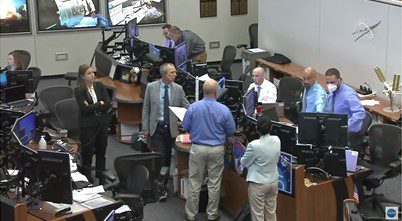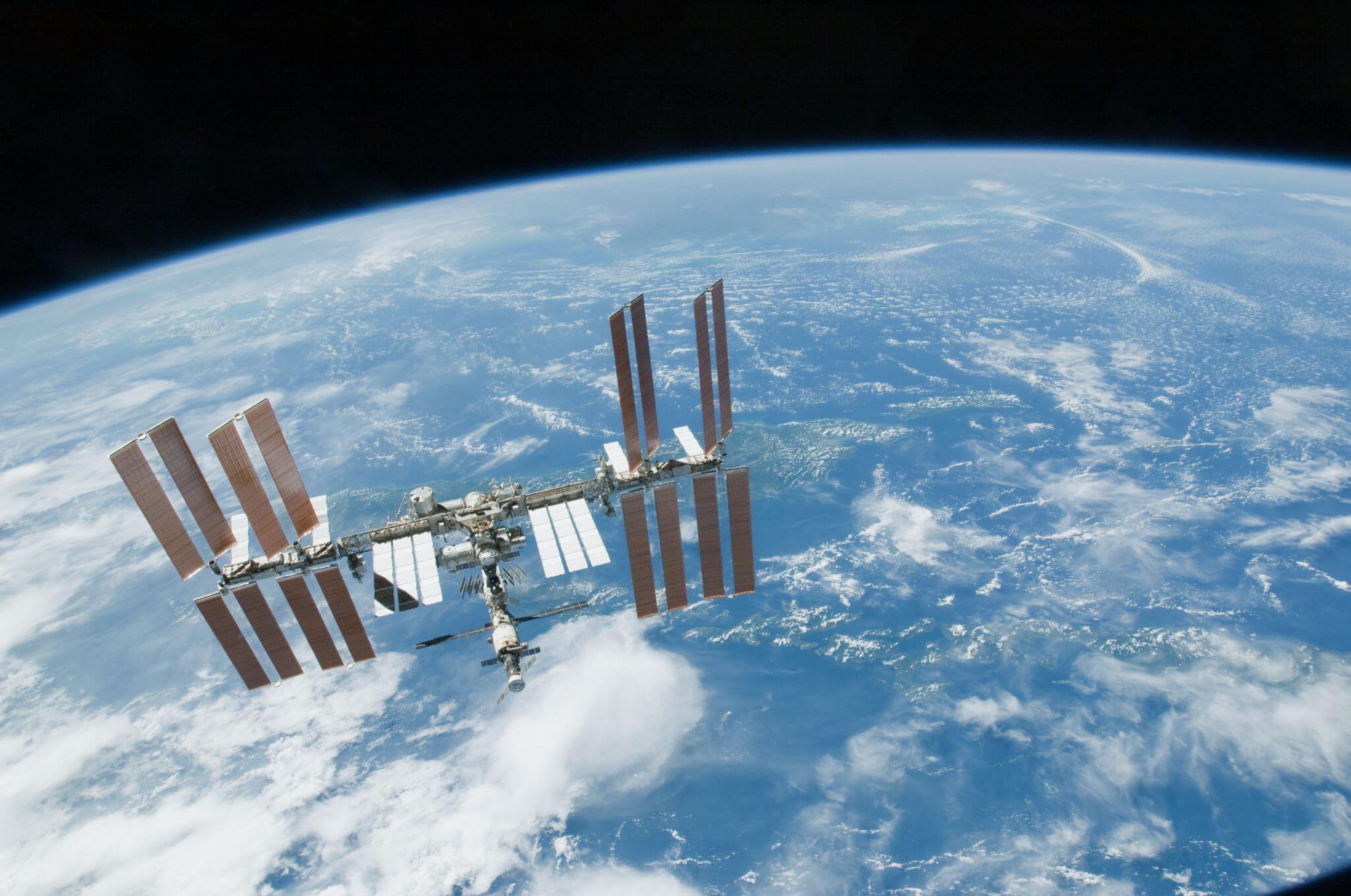Crew members of Expedition 65, ESA astronaut Thomas Pesquet and NASA astronaut Shane Kimbrough switched to internal battery power and opened the Quest Airlock hatch at 1211 GMT on 16 June. The planned six-and-a-half-hour mission was to fit the first of six new ISS Roll Out Solar Arrays (iROSA) panels in-between the existing solar panels, which are beginning to show signs of degradation. The new iROSA solar panels are required to restore ISS power generation to its original levels.
Upon leaving the Quest Airlock, the thermal fabric hatch covering would not close at first and so Kimbrough had to spend more time than planned to get the covering configured properly. The astronauts then moved to the iROSA Flight Support Equipment (FSE) and using Canadarm2 installed the FSE onto the Mobile Base System (MBS) Payload ORU Accommodation (POA).
Before the astronauts could continue to the P6 truss installation site however, Kimbrough had two issues with his suit. First, a sensor in the suit’s sublimator, which provides pressure, registered a spike and then the Display and Control Module (DCM) malfunctioned. Kimbrough returned to the Quest Airlock to connect back to the Station umbilicals to attempt a ‘warm restart’ to the DCM. During the restart, the suit briefly lost its cooling and CO2 scrubbing capabilities which is expected when restarting a DCM.

Flight Director, Ron Spencer and astronaut Drew Feustel decide to bring Kimbrough back to the Quest Airlock for a DCM ‘warm restart’. Courtesy NASA.
Following the successful restart, Kimbrough made his way back to the worksite to join Pesquet. He had remained in the foot restraint attached to the end of the station’s robotic Canadarm2, in preparation to continue the work to release the first iROSA panel.
NASA astronaut Megan McArthur positioned Canadarm2 and Pesquet out toward the P6 truss where he handed the iROSA to Kimbrough. Canadarm2 cannot reach all the way to the worksite, so Pesquet dismounted the arm and repositioned.
Kimbrough handed the iROSA back to Pesquet and the astronauts then aligned the iROSA onto the mounting bracket of the “Mod Kit” at the base of the 2B Mast Canister Assembly (MCA). It became apparent that the iROSA could not be unfolded into its deployment configuration due to interference from a nearby structure. The EVA was now at the six-hour mark and ground teams decided the astronauts should photograph the interference, firmly secure the iROSA and end the spacewalk. The hatch closed on this 239th EVA and seventh to date this year at 1926 GMT – Seven hours and fifteen minutes after hatch opening.
Teams will now evaluate how to unfold the array prior to the next scheduled EVA on 20 June. Four electrical connections between the iROSA and the 2B MCA will also need to be connected to complete this installation.
This was Pesquet’s third EVA and Kimbrough’s seventh and the third they conducted together.
Update on 21 June: Astronauts Thomas Pesquet and Shane Kimbrough exited the ISS at 1142 GMT on 20 June to complete the deployment of a new iROSA (solar array) on the far end of the port side of the station’s backbone truss structure (P6). With the first iROSA successfully unfolded, bolted it into place and connected to the station’s power supply, the astronauts EVA ended after 6 hours and 28 minutes (1810 GMT). The next EVA is expected around 25 June.






